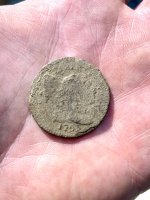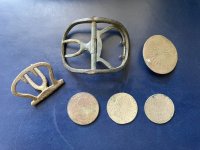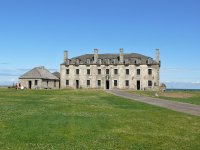cheffer
Hero Member
- Sep 17, 2004
- 906
- 2,644
- 🥇 Banner finds
- 2
- Detector(s) used
- XP Deus, Fisher 1275 LTD, Fisher 1265, Fisher 1270, Tesoro Vaquero
- Primary Interest:
- Metal Detecting
Went out early along the highway, small strip of public woods not far from my house. SO much trash, very popular party spot. But I was getting decent deep signals mixed in and found a dandy button and two excellent buckles. Then I dug a way deep KG along what might have been an old swamp area, hard to tell what was there that long ago.
Deep in the tick-infested brush I came across a nice large cent, not a very legible date, but always happy to see Liberty facing right. About a foot away another large, and this time the 17 jumped right out at me. I have a couple almost positive Liberty Caps in my collection but never any numerals. Definitely going back to work the trash, this had to be some kind of path or happy hunting grounds in the day.


Thanks for looking,
Steve
Deep in the tick-infested brush I came across a nice large cent, not a very legible date, but always happy to see Liberty facing right. About a foot away another large, and this time the 17 jumped right out at me. I have a couple almost positive Liberty Caps in my collection but never any numerals. Definitely going back to work the trash, this had to be some kind of path or happy hunting grounds in the day.
Thanks for looking,
Steve
Amazon Forum Fav 👍
Attachments
Upvote
57









